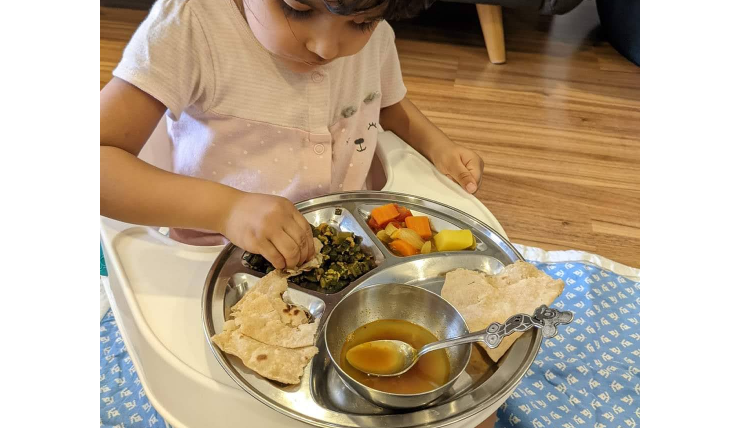Common Breastfeeding issues
Breastfeeding has several benefits both to the baby and the mother. Your baby will have fewer ear infections, respiratory illnesses and bouts of diarrhea. Breast milk contains antibodies, which help your baby to fight off viruses and bacteria. It lowers the risk of several chronic illnesses like diabetes, obesity and some types of cancers. For the mother, breastfeeding helps to loose weight faster. It lowers the risk of breast, ovarian cancer and osteoporosis.
Find below some of the most common Breastfeeding problems, that mothers may face through their breastfeeding journey:
1. Sore nipples
Due to an improper latch, it is very common for new mothers to have sore nipples. Also the nipples are not used to be suckled at, which causes them to be sore.
Solution:
It is important that the baby is latched on properly each time you nurse your baby. Try to achieve an asymmetrical latch where baby’s mouth covers more of the areola below the nipple rather than above. If the latch doesn’t seem right, gently remove the suction by placing your index finger inside baby’s mouth to take him off your breast. Tickle his chin or wait until he yawns so his mouth is wide open, now offer your breast to your baby. When he is correctly positioned, his chin will touch your breast, his lips splay out and you can’t see your nipple or part of the lower areola.
Avoid using soap to wash your nipples, this can dry them out. Use lanolin ointment to heal sore nipples.
2. Cracked nipples
This can be caused due to Thrush – a bacterial infection, dry skin, pumping improperly and latching problems. Cracked nipples may result in some bleeding, which won’t harm your baby.
Solution:
Check the baby’s position and latch, each time you breastfeed. Frequent nursing will result in a less hungry baby, who in turn will suckle softly. Do not use any soaps or alcohol, use water and soft cloth to wipe your nipples. Apply your breast milk on your nipples after each feed and air dry them. Lanolin cream will be useful in healing cracked nipples as well.
3. Clogged Ducts
When there is backing up of milk, the ducts get clogged, causing a lump in the breast. You will notice a lump or some soreness, even some redness. Tight bra & tight clothing, wearing a baby carrier may also cause clogged ducts.
Solution:
Massage the breast in a warm shower, to remove the lump. Use warm compress. Do not stop breastfeeding, it will help dissolve the lump.
4. Engorgement
When the mother’s milk comes in, usually between the second and fourth day after delivery, breasts start making large amounts of liquid milk. In addition to this, increase in blood flow to the breasts, cause the tissues in the breast to swell. Engorgement usually happens in the early weeks after the baby’s birth.
Solution:
Before feeding, soften the breast by with a warm compress or expressing some amount of milk manually or with a breast pump. Feed the baby on demand ensuring a good latch, as often as the baby wants and as long as the baby wants. Continue to breastfeed to ease the engorgement. Otherwise it may increase the chance of Mastitis, a painful inflammation of the breast.
Use a cold pack after feeding to soothe the pain. Wearing a good support bra is essential to reduce the discomfort.
5. Mastitis
It is a bacterial infection alongwith fever and inflammation of the breast. Clogged duct, improper latch, engorgement, sore nipples, if left untreated result in Mastitis.
Solution:
Breastfeed frequently or express milk to ensure the red firm areas of the breast are softened. Massage your breasts with a warm flannel, try breastfeeding in different positions to drain out your breasts and in extreme cases in a lot of pain, mothers have to take antibiotics. Rest and drink plenty of fluids to recover faster.
6. Milk bleb:
A milk bleb is a small white spot on the nipple, that hurts when you feed your baby. It may be due an overgrowth of skin cells or a collection of fatty material from the milk.
Solution:
Frequent breastfeeding on demand will result in the bleb eventually dissolving. Applying warm coconut oil or hot compress on the bleb may soften it and drain it out.
7. Leaking Breasts
This is caused when a mother makes lots of milk. A strong let down reflex, a warm environment like in a bath, hearing her baby cry can cause leaking breasts.
Solution:
Breastfeeding your baby on demand will help in reducing leaking. Use breast pads to soak up the extra milk. However do change the breast pads if they are wet, as it may cause a bacterial infection. Breast shells can be worn to collect the excess milk.
8. Low Milk Supply
A Sleepy baby doesn’t suckle effectively resulting in low milk supply. Breastfeeding is a demand-supply process. Further weak Let down reflex, nursing infrequently due to Sore nipples or giving Formula feed, feeding on a routine and a Breast surgery may result in low milk supply.
Solution:
Frequent feeding, pumping milk can help increase milk supply. Eating galactogogues like fenugreek, fennel, asparagus (shatavari), sunflower, sesame seeds, almonds, pumpkin, dates and ginger are some foods that can help in milk production.
9. Breast Pain:
There are several reasons for breast pain. Let down reflex, lots of milk, Thrush, Engorgement
Mastitis, Premenstrual pain, badly fitting bra can cause the breast to pain.
Solution:
Keep breastfeeding your baby to ease the pain eventually. Ensure a good latch and proper positioning of your baby while breastfeeding.
10. Stressed Mother:
Many new mothers doubt their ability to breastfeed. They are not sure if they are making enough milk for their baby.
Solution:
Attending a Breastfeeding class will help a new mother to be, to prepare for breastfeeding from pregnancy itself and to prepare her breasts for nursing. Further feeding the baby skin to skin immediately after birth, eating healthy nutritious foods, massage, listening to soothing music and meditating will help a mother relax.
Breastfeeding immediately after the birth of your baby, ensuring a good latch and position, feeding on demand initially will pave the path for successful breastfeeding relation. Ask for help of a Lactation consultant in case of problems and pain. Most importantly, rest, drink plenty of fluids, stay calm and enjoy your baby.
For more information do contact Seema at 8976358267 or mail at [email protected]




